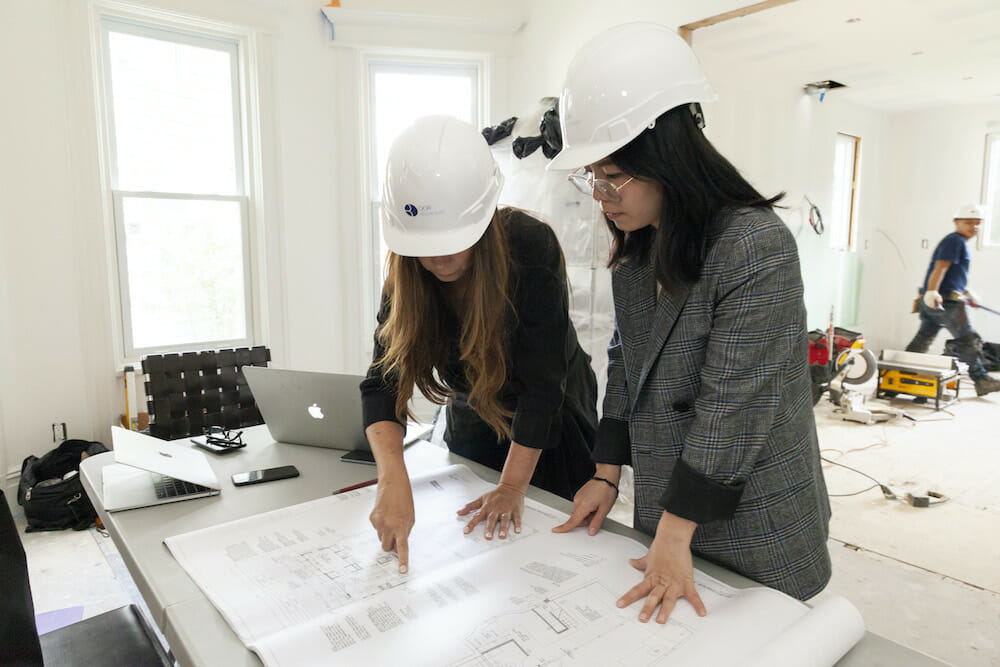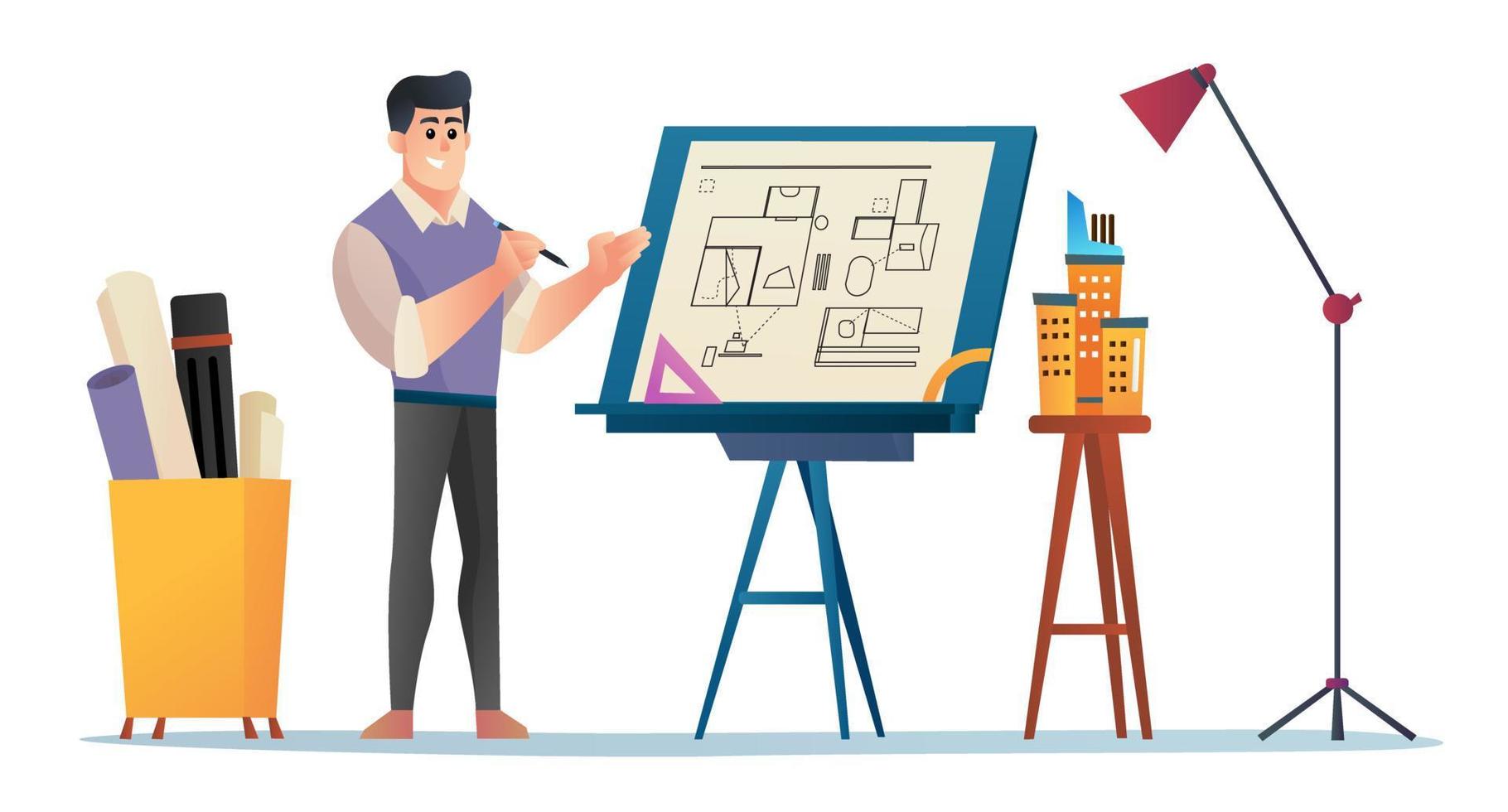Architect Insights on Harmonizing Form and Function
Architect Insights on Harmonizing Form and Function
Blog Article
Comprehending the Diverse Career Paths Available for Aspiring Architect
As an aspiring Architect, you have a world of profession paths waiting for you. Whether you're attracted to standard architecture or the nuances of lasting style, there's a niche that aligns with your rate of interests.
Conventional Style: Designing Frameworks and structures
Typical design focuses on developing structures and frameworks that blend capability with aesthetic allure. Your styles can mirror social heritage, showcasing local traditions while satisfying modern needs.
You'll create skills in composing, model-making, and website evaluation, enabling you to picture and interact your concepts properly. Engaging with clients, you'll need to comprehend their vision and translate it into practical styles.
In addition, developing codes and sustainability methods are vital in your work, ensuring your frameworks are eco pleasant and risk-free. As you expand in your career, you'll discover opportunities in household, business, or perhaps remediation jobs, each offering distinct challenges. Accepting conventional design leads the way for a fulfilling career that admires the past while forming the future.
Urban Preparation: Forming Areas and Public Spaces
As an aspiring Architect, you can play a vital duty as an urban planner, changing how communities function and connect. By utilizing area engagement approaches, you'll guarantee that residents have a voice in forming their environment. And also, incorporating lasting design principles will assist create spaces that not only satisfy today's needs yet additionally secure the future.
Role of Urban Planners
While lots of may think about designers as the sole dreamers behind buildings, city coordinators play an important role in forming the wider landscape of areas and public rooms. They assess land usage, zoning legislations, and neighborhood needs to produce sustainable settings that improve quality of life. By collaborating with numerous stakeholders, you'll help design parks, transport systems, and suburbs that advertise social interaction and availability. Urban planners likewise concentrate on environmental considerations, making certain that advancements integrate eco-friendly rooms and assistance biodiversity. Your know-how in spatial design and neighborhood dynamics enables you to imagine future development while protecting social heritage. In this crucial duty, you'll straight influence just how individuals experience their surroundings, making every project a chance for favorable modification.
Neighborhood Involvement Approaches
Efficient neighborhood interaction methods are crucial for urban planners to assure that the voices of residents are heard and valued in the planning procedure. To promote significant dialogue, you need to focus on open discussion forums and workshops where area members can reveal their concepts and issues. By proactively paying attention and integrating responses, you'll develop spaces that mirror the community's demands, inevitably leading to even more sustainable and effective city settings.
Sustainable Style Principles
When designing metropolitan rooms, integrating lasting design concepts is critical for creating atmospheres that flourish both environmentally and socially. You ought to start by concentrating on energy effectiveness, using products that minimize waste and advertise recycling. Think about incorporating environment-friendly rooms, like gardens and parks, to improve biodiversity and improve air top quality. Advertising walkability and public transport can minimize dependence on cars and trucks, cultivating a healthier area.
Creating with water conservation in mind is additionally essential-- assume regarding rain gardens and permeable surfaces to take care of stormwater. Including area participants during the planning procedure guarantees that the areas you produce satisfy their needs and urge social communication. By welcoming these concepts, you'll add to vibrant, lasting urban landscapes that profit everyone.

Landscape Style: Developing Lasting Outside Atmospheres
As you explore landscape style, you'll uncover crucial layout concepts that produce useful and gorgeous exterior areas. Lasting methods play an important duty in making sure these environments prosper while minimizing ecological impact. And also, you'll find a range of profession opportunities that allow you to make a genuine difference in how individuals communicate with nature.
Layout Concepts in Landscape
Understanding style concepts in landscape style is necessary for creating sustainable exterior environments that integrate with nature. You'll need to consider components like proportion, equilibrium, and range to assure your designs feel natural and welcoming. Incorporating native plants not just enhances biodiversity but also reduces water use, making your landscape durable. Assume about the circulation of room and exactly how individuals engage with it; pathways and seating areas ought to invite expedition and leisure. Additionally, focus on seasonal modifications, creating with products that match the environments year-round (Architect). By focusing on sustainability and aesthetics, you can create outdoor rooms that enrich the community and advertise wellness. Accepting these principles will establish a strong foundation for your occupation in landscape style.
Sustainable Practices Overview
Sustainable methods in landscape style not just focus on visual appeals however additionally focus on ecological health and resource conservation. You can create rooms that advertise soil wellness, such as using organic materials and practicing permaculture principles. Eventually, these methods ensure your layouts profit both individuals and the environment for years to come.
Career Opportunities Exploration
With a strong foundation in lasting techniques, landscape style offers a variety of occupation courses that enable you to make a meaningful influence on the environment. Urban planners typically work together with landscape engineers to create eco-friendly spaces in urban setups, enhancing city livability. If you're enthusiastic about education and learning, consider coming to be a landscape design teacher, motivating future generations.
Sustainable Style: Focusing on Eco-Friendly Practices
As you explore your job in design, embracing environment-friendly practices can set you apart in a competitive area. Sustainable style focuses on producing buildings that lessen ecological effect while boosting occupant health. By incorporating sustainable materials, energy-efficient systems, and lasting building methods, you'll add to a greener future.
Begin by acquiring understanding of green qualifications like LEED or BREEAM, which can bolster your credentials. Think about just how natural light, air flow, and thermal performance can optimize design. Work together with designers and ecological consultants to innovate options that lower waste and preserve sources.
Don't fail to remember the value of area participation-- interesting neighborhood stakeholders can inspire designs that harmonize with the atmosphere. As clients progressively prioritize sustainability, your knowledge in green practices will certainly not just bring in tasks yet additionally fulfill your passion for liable design. Welcome this important element of the profession, and view your career grow.
Historical Conservation: Securing and Bring Back Cultural Heritage
While you commence on your architectural trip, take into consideration the crucial duty of historical preservation in preserving our cultural heritage. This field concentrates on the defense and repair of considerable buildings, sites, and structures that go inform the stories of our past. By taking part in historical preservation, you'll assist protect the architectural tradition that forms area identification.
As a historical conservation Architect, you'll assess historic relevance and analyze the condition of frameworks. You'll work very look what i found closely with historians and conservationists to ensure genuine repair techniques are utilized. This career course allows you to blend creative thinking with research study, enabling you to create options that respect original materials and workmanship.
Your work not only adds to sustainability by reusing existing structures but additionally promotes a sense of satisfaction within areas. Welcoming this path will certainly assist you become a guardian of history, protecting the tales and aesthetics that enhance our lives.
Inside Design: Enhancing Indoor Spaces
Historical preservation and interior style both share a commitment to boosting the developed setting, but they concentrate on various aspects. While historic preservation highlights maintaining a structure's social and historical worth, interior style zeroes in on maximizing interior areas for capability and looks.
As a hopeful Architect, you'll find that interior style enables you to blend creativity with technological skills. You'll design rooms that not only look great but additionally promote comfort and efficiency. This area involves comprehending how light, shade, and products engage within a space, impacting state of mind and functionality.
You'll deal with different jobs, from residential homes to commercial workplaces, ensuring that each setting fulfills the demands of its passengers. By focusing on individual experience, you can transform insides right into motivating and practical rooms, making a substantial influence on exactly how people interact with their environments. Welcome the chance to enhance interior settings and shape the way individuals work and live.
Industrial Design: Combining Performance With Aesthetics
Commercial style plays a vital role in developing items that flawlessly blend aesthetic appeals with functionality, guaranteeing Check Out Your URL that what you make use of day-to-day is not just aesthetically attractive but also practical. As an aspiring Architect, you can engage yourself in this area, concentrating on developing everything from furnishings to customer electronic devices. Your work entails comprehending user demands, materials, and making processes, permitting you to create cutting-edge services that boost daily experiences.
In industrial layout, you'll usually team up with producers, marketing professionals, and designers, making certain that your styles are not only stunning but also feasible. This career course provides a dynamic setting where imagination meets functionality, making it a fulfilling selection for engineers interested in forming the items of tomorrow.
Regularly Asked Inquiries
What Educational Credentials Do I Required to Become an Architect?
To become an engineer, you'll require a professional level in architecture, commonly a Bachelor's or Master's. In addition, you'll have to finish an internship and pass the Architect Registration Assessment to practice lawfully.
Exist Certification Requirements for Different Building Career Paths?
Yes, there're qualification demands for different architectural courses. Architect. You'll require to pass examinations, complete internships, and sometimes go after specialized training, depending on your selected emphasis, like landscape architecture, metropolitan layout, or historic conservation
What Software Abilities Are Important for Engineers Today?

Exactly How Can I Gain Practical Experience While Studying Design?
You can gain sensible experience by interning at architectural companies, taking part in design competitors, volunteering for neighborhood projects, or working together with classmates on real-world tasks. These opportunities improve your skills and develop important links in the industry.
What Work Opportunities Exist Outside Standard Architecture Firms?
You can check out numerous task possibilities outside conventional architecture firms, like metropolitan preparation, interior layout, landscape architecture, construction monitoring, real estate growth, or perhaps functions in sustainability consulting. Each offers distinct difficulties and incentives.
Whether you're attracted to conventional design or the subtleties of lasting design, there's a particular niche that straightens with your interests.When creating city rooms, incorporating sustainable style concepts is essential for producing settings that grow both ecologically and socially.As you explore landscape design, you'll find necessary style concepts that create useful and lovely outdoor spaces.Comprehending style principles in landscape design is necessary for producing sustainable outside atmospheres that balance with nature.In industrial style, you'll commonly collaborate with designers, suppliers, and marketing experts, guaranteeing that your designs are not only beautiful yet additionally viable.
Report this page